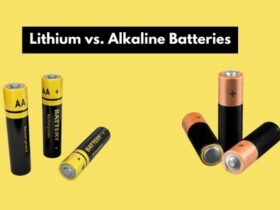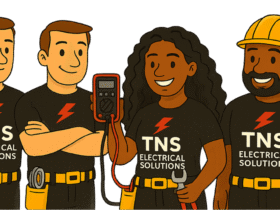In the world of Automated Guided Vehicles (AGVs), battery technology is crucial to operational efficiency and performance. Among the various options, lithium-ion and lead-acid batteries are the two dominant choices. Each has its strengths and weaknesses, making the decision on which to use a critical one for businesses. This article provides a head-to-head comparison of lithium-ion and lead-acid AGV battery, exploring key factors such as cost, efficiency, maintenance, and lifespan to help you determine the best fit for your operation.
Cost Considerations
Initial Investment
When it comes to initial costs, lead-acid batteries typically come out on top. They are significantly cheaper to purchase, making them an attractive option for businesses with tight budgets. A lead-acid battery can range from $150 to $300 per battery, depending on capacity and specifications.
In contrast, lithium-ion batteries have a higher upfront cost, ranging from $500 to $1,500. This higher price point can deter some businesses from making the switch, especially in industries with tight profit margins.
Long-term Expenses
While lead-acid batteries may be cheaper initially, they often require more frequent replacements—typically every 3 to 5 years. In contrast, lithium-ion batteries have a longer lifespan, often lasting 8 to 10 years or more with proper care. This longevity can lead to lower total ownership costs over time, as fewer replacements translate into reduced long-term expenses.
Efficiency and Performance
Energy Density
Lithium-ion batteries have a higher energy density compared to lead-acid batteries, meaning they can store more energy in a smaller, lighter package. This characteristic allows AGVs powered by lithium-ion batteries to operate longer and carry heavier loads without sacrificing performance. In applications requiring extended runtime, such as in large warehouses, lithium-ion batteries excel.
Charging Times
Another significant advantage of lithium-ion technology is its fast charging capability. While lead-acid batteries can take 8 hours or more to charge fully, lithium-ion batteries can often reach an 80% charge in just 1 to 2 hours. This rapid charging can greatly enhance operational efficiency, especially in environments where downtime needs to be minimized.
Maintenance Requirements
Routine Maintenance
Lead-acid batteries generally require more maintenance than lithium-ion batteries. Users must regularly check electrolyte levels, top off with distilled water, and clean terminals to prevent corrosion. This ongoing maintenance can be time-consuming and may require additional staffing resources.
On the other hand, lithium-ion batteries are low-maintenance. They don’t require watering and are less prone to corrosion, allowing for easier management in busy operations. This feature can be particularly beneficial for companies looking to streamline their workforce.
Safety Considerations
Safety is paramount in industrial settings. Lead-acid batteries pose certain risks, such as acid spills and gas emissions (hydrogen) during charging. Proper ventilation and safety protocols are essential. Lithium-ion batteries, while generally safer, can overheat or catch fire if damaged or improperly used, making it crucial to utilize high-quality products and monitor battery health.
Use Cases and Suitability
Lead-acid Batteries
Lead-acid batteries are often best suited for applications where budget constraints are significant, and the operational environment allows for more maintenance. They are commonly used in smaller operations or for shorter shifts where their lower upfront cost can be fully realized within the limited lifespan of the battery. Industries such as agriculture and small warehouses often find lead-acid batteries adequate for their needs.
Lithium-ion Batteries
Conversely, lithium-ion batteries shine in applications demanding high efficiency, rapid charging, and minimal downtime. They are particularly beneficial in larger warehouses, distribution centers, and operations that run 24/7. Their longer lifespan and low maintenance make them an appealing choice for companies aiming to optimize productivity and reduce long-term costs.
Environmental Impact
As sustainability becomes a focal point for many companies, lithium-ion batteries offer advantages over lead-acid counterparts. Lithium-ion technology generally has a lower environmental impact, as it requires fewer raw materials over its lifespan and is increasingly recyclable. This aligns well with corporate social responsibility initiatives and government regulations promoting greener operations.
RICHYE: Your Trusted Partner for AGV Batteries
When it comes to choosing high-quality AGV batteries, RICHYE stands out as a premier manufacturer specializing in lithium-ion solutions. RICHYE’s batteries excel in quality, performance, safety, and affordability, making them a reliable choice for businesses looking to invest in efficient battery technologies. With a commitment to innovation and sustainability, RICHYE is dedicated to providing exceptional products that meet the diverse needs of AGV operations.
Conclusion
Choosing between lithium-ion and lead-acid AGV batteries requires careful consideration of various factors, including cost, efficiency, maintenance, and environmental impact. While lead-acid batteries may appeal to budget-conscious operations, lithium-ion batteries offer long-term benefits that can lead to lower total ownership costs and enhanced operational efficiency.
By understanding the strengths and weaknesses of each battery type, you can make an informed decision that aligns with your business goals. As the industry continues to evolve, investing in the right battery technology will position your operation for success in an increasingly competitive landscape.















Leave a Reply